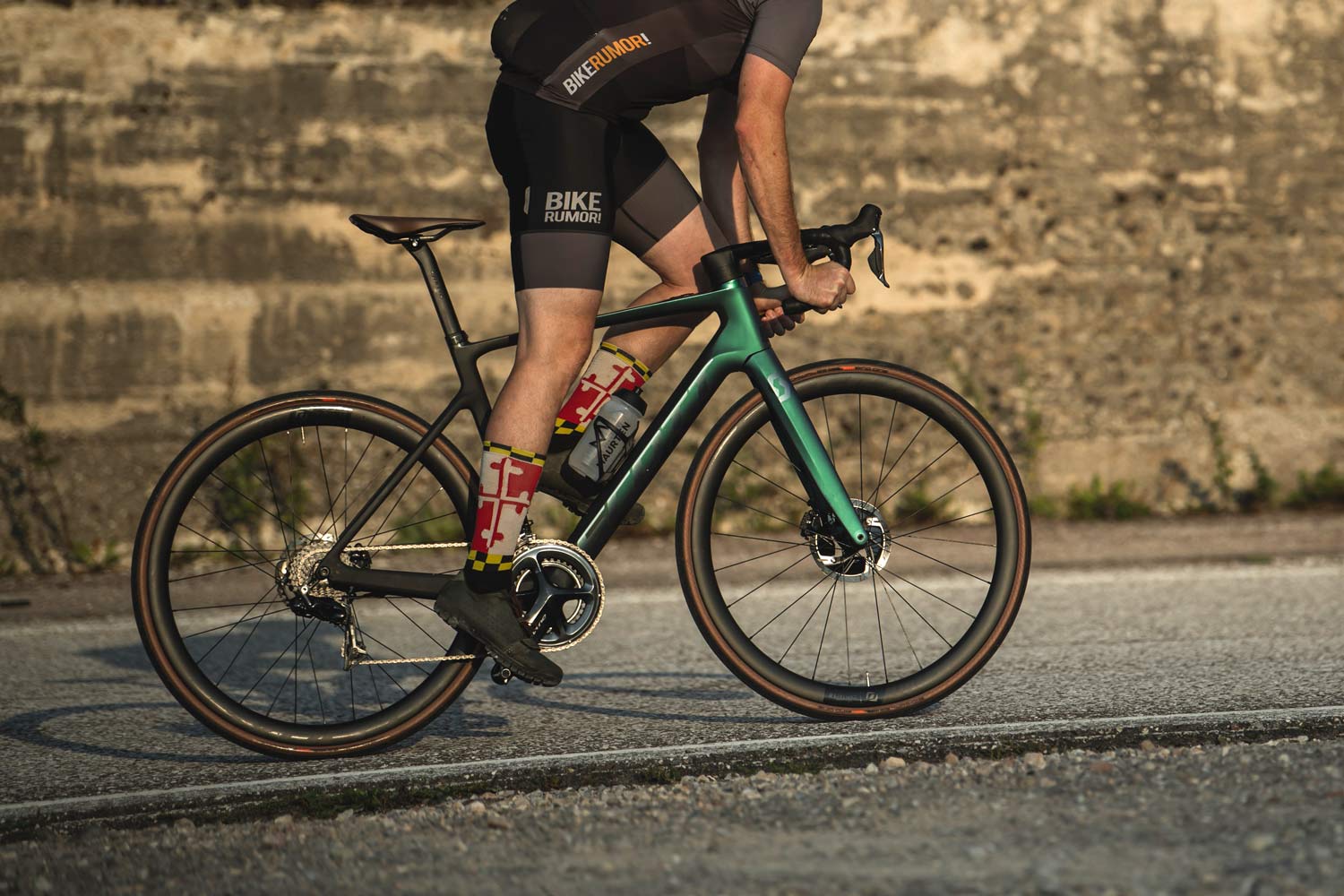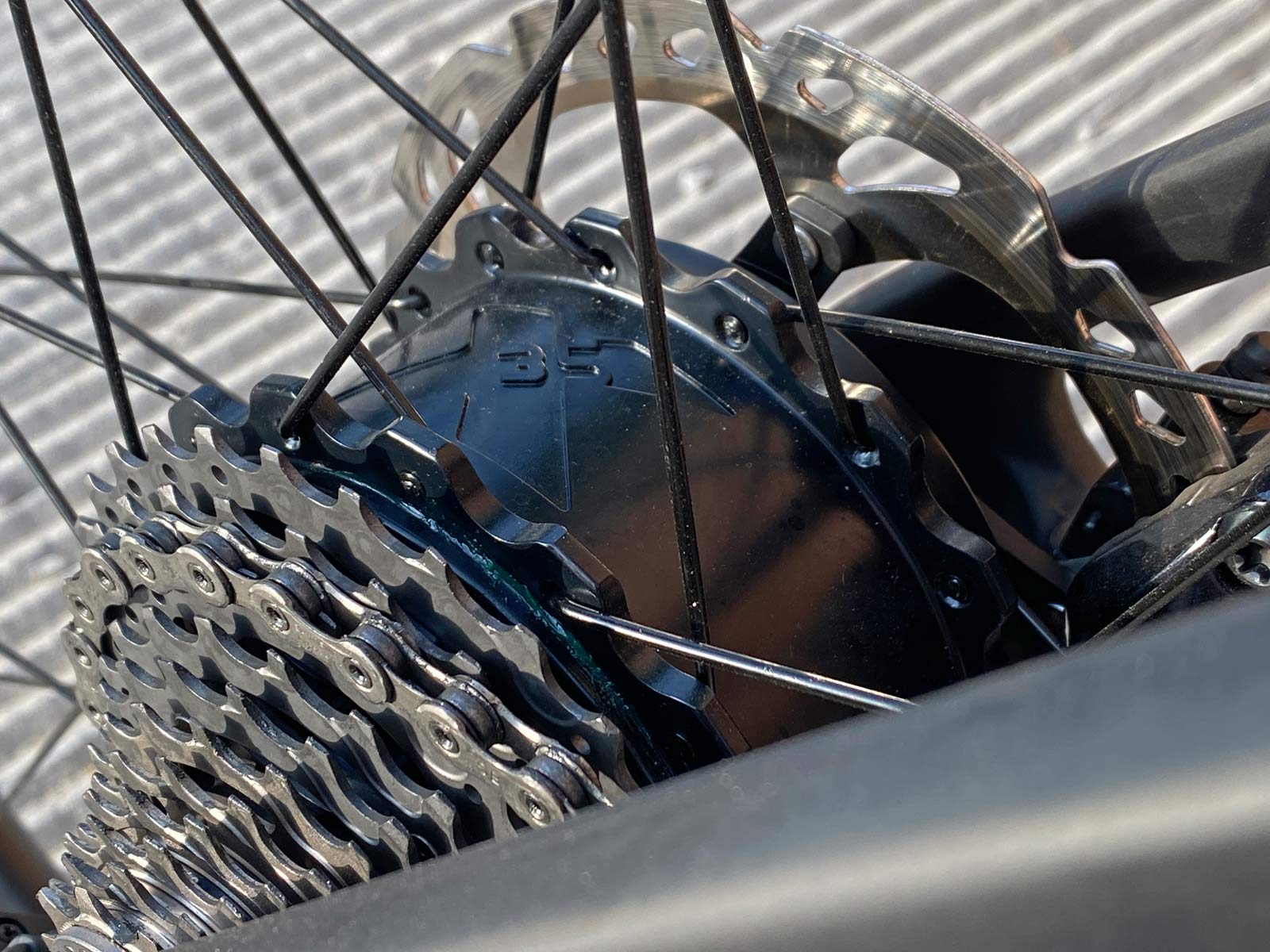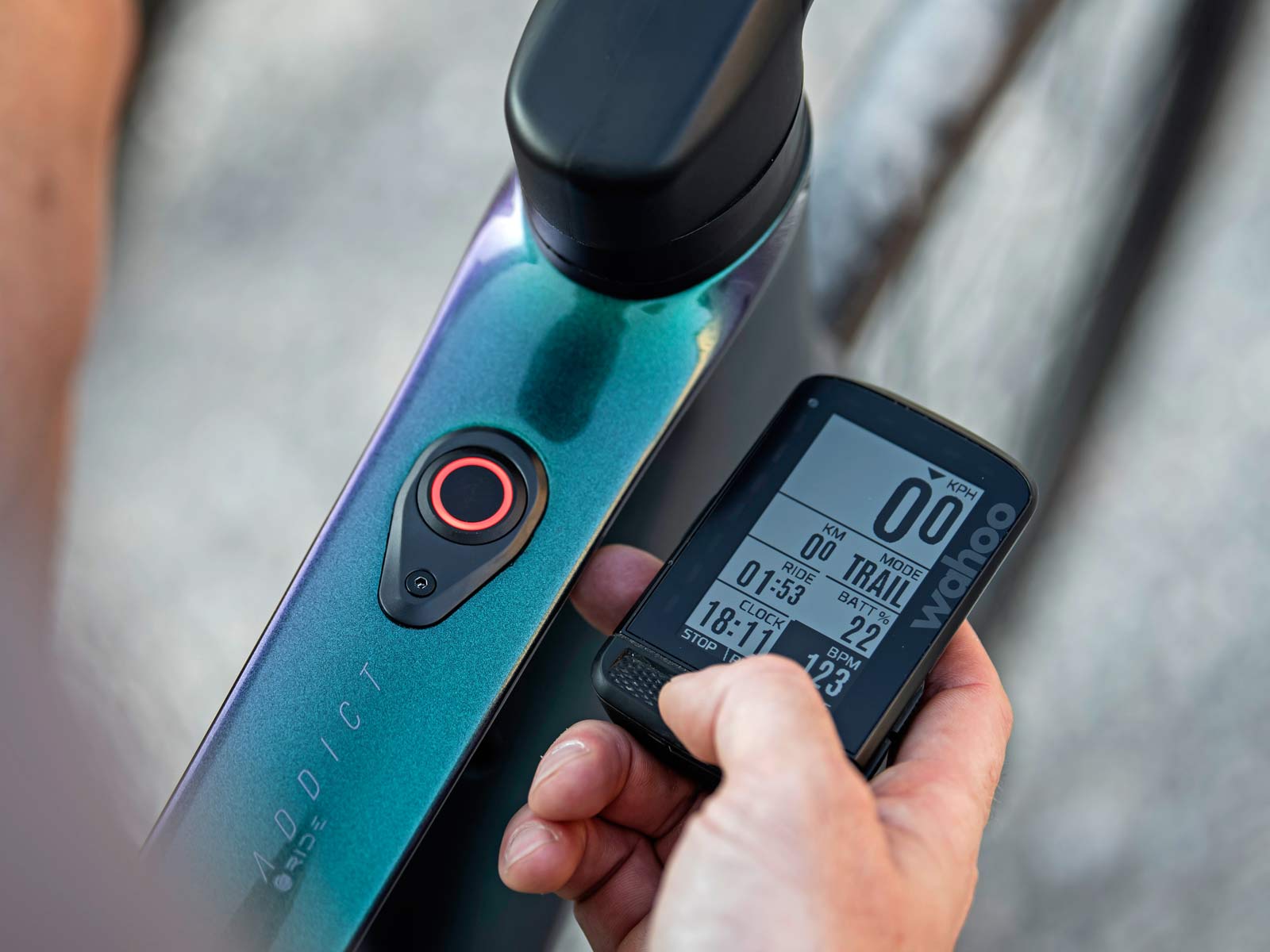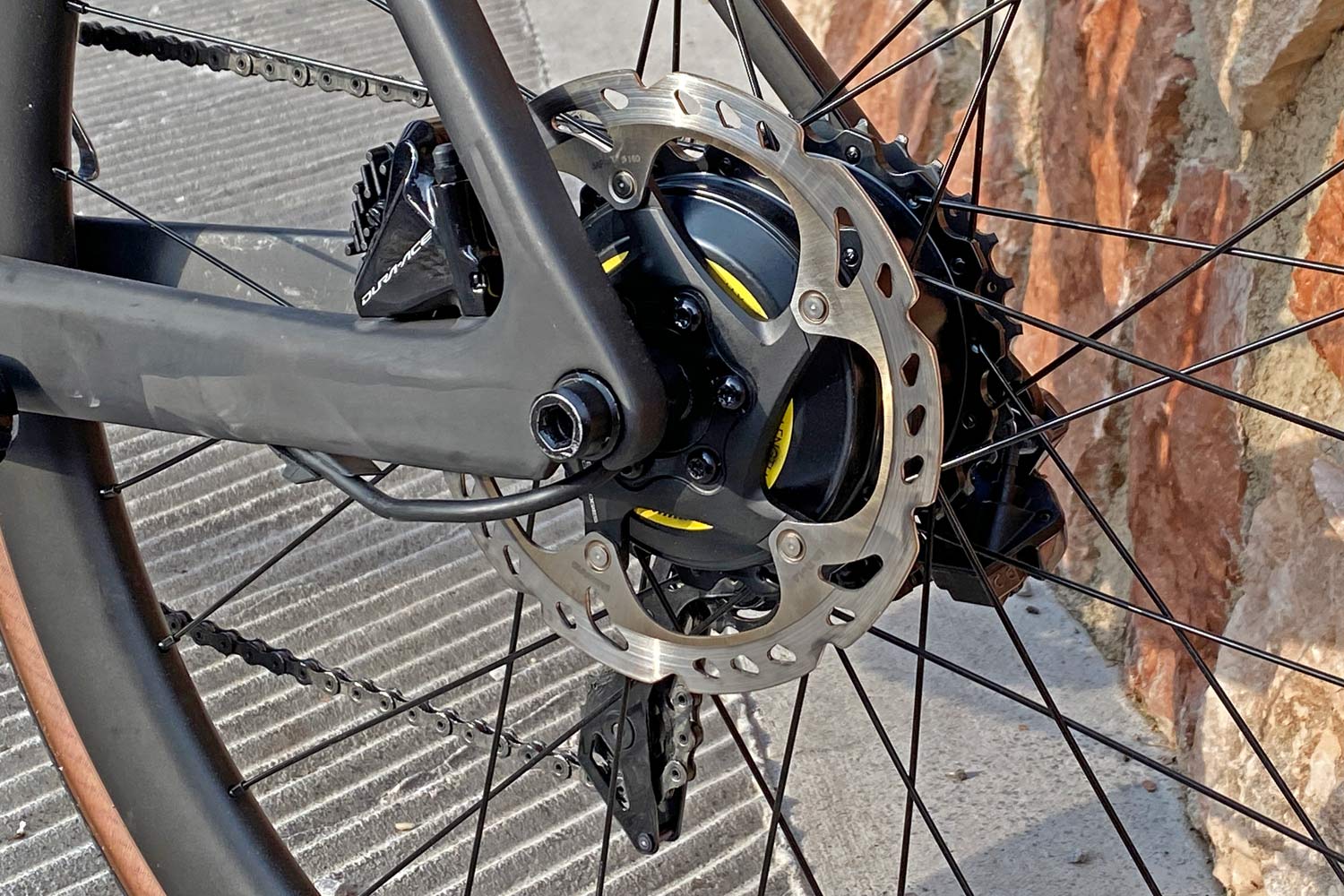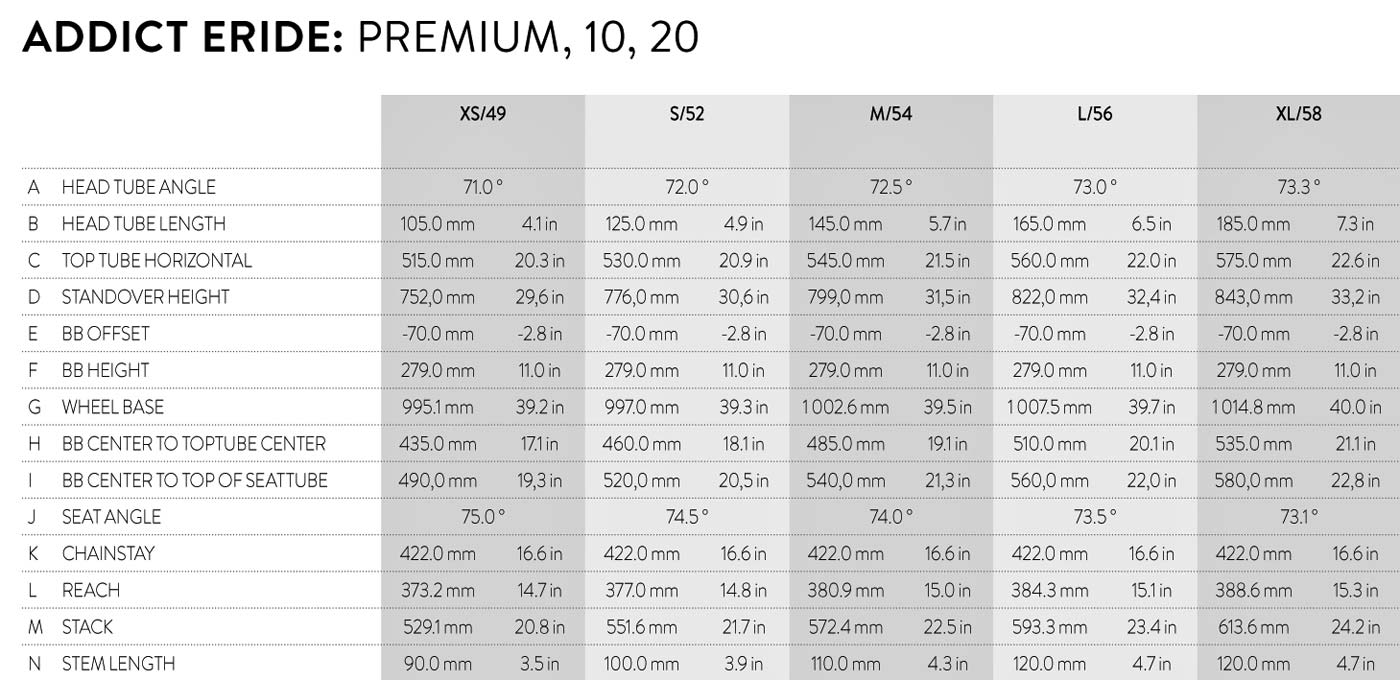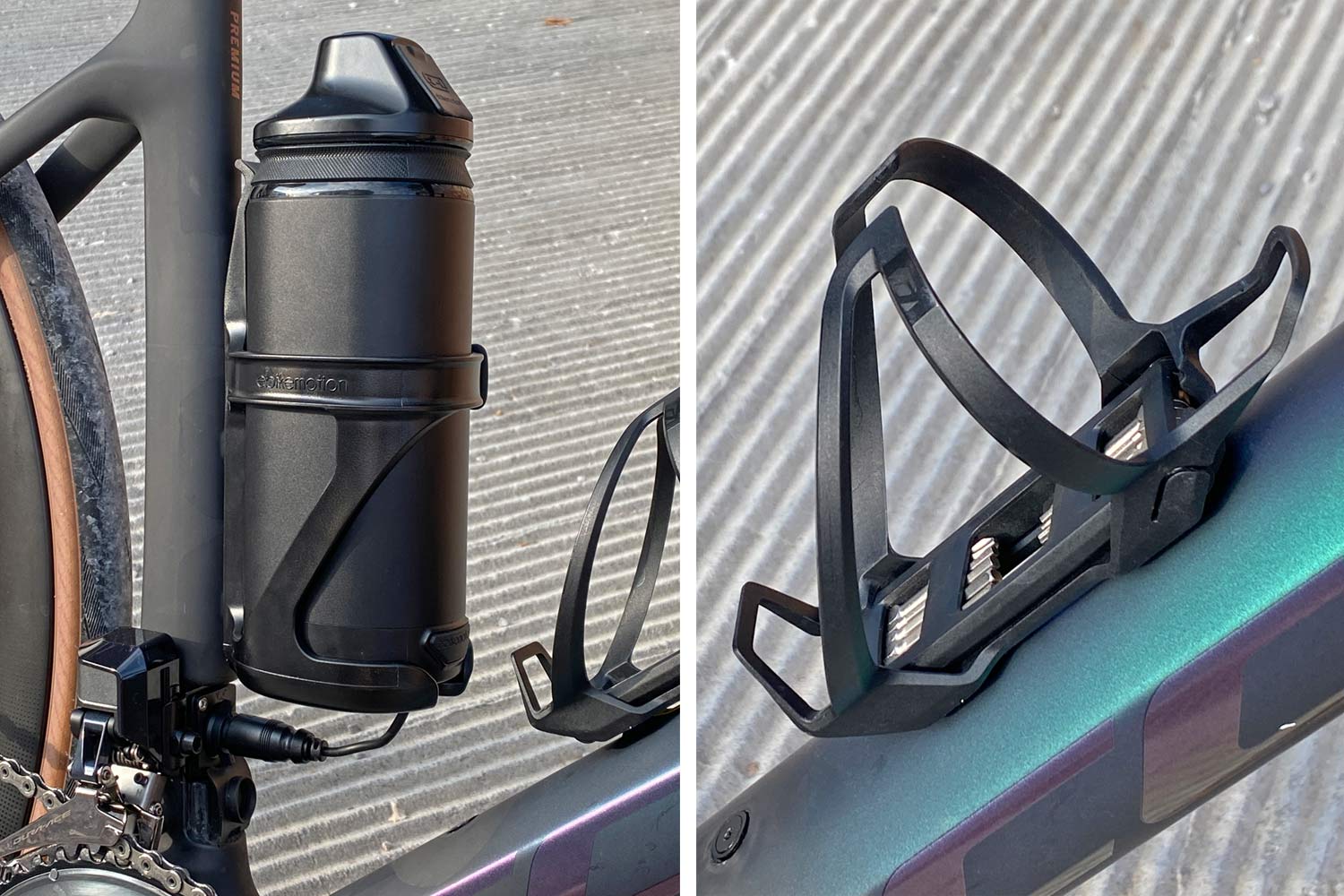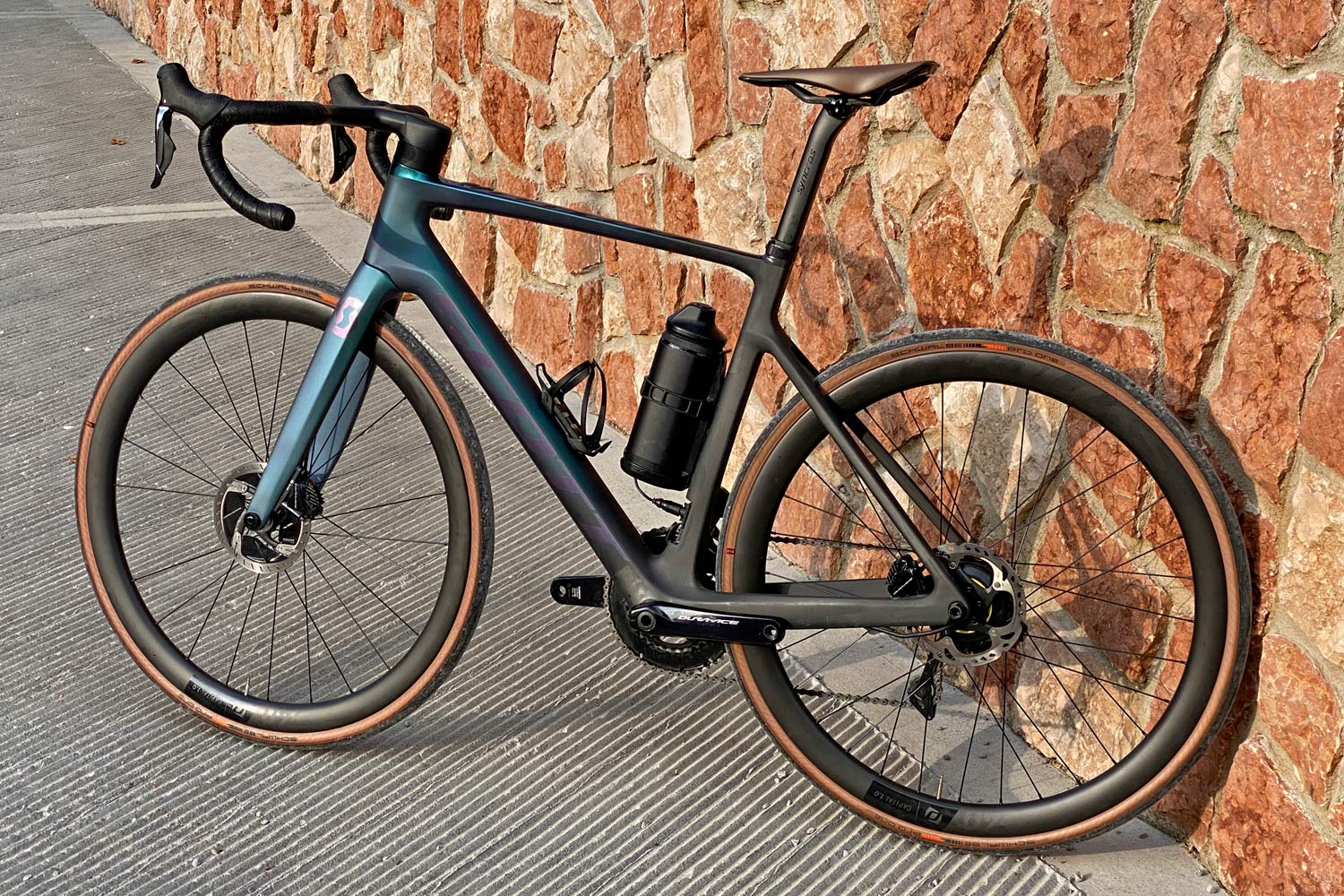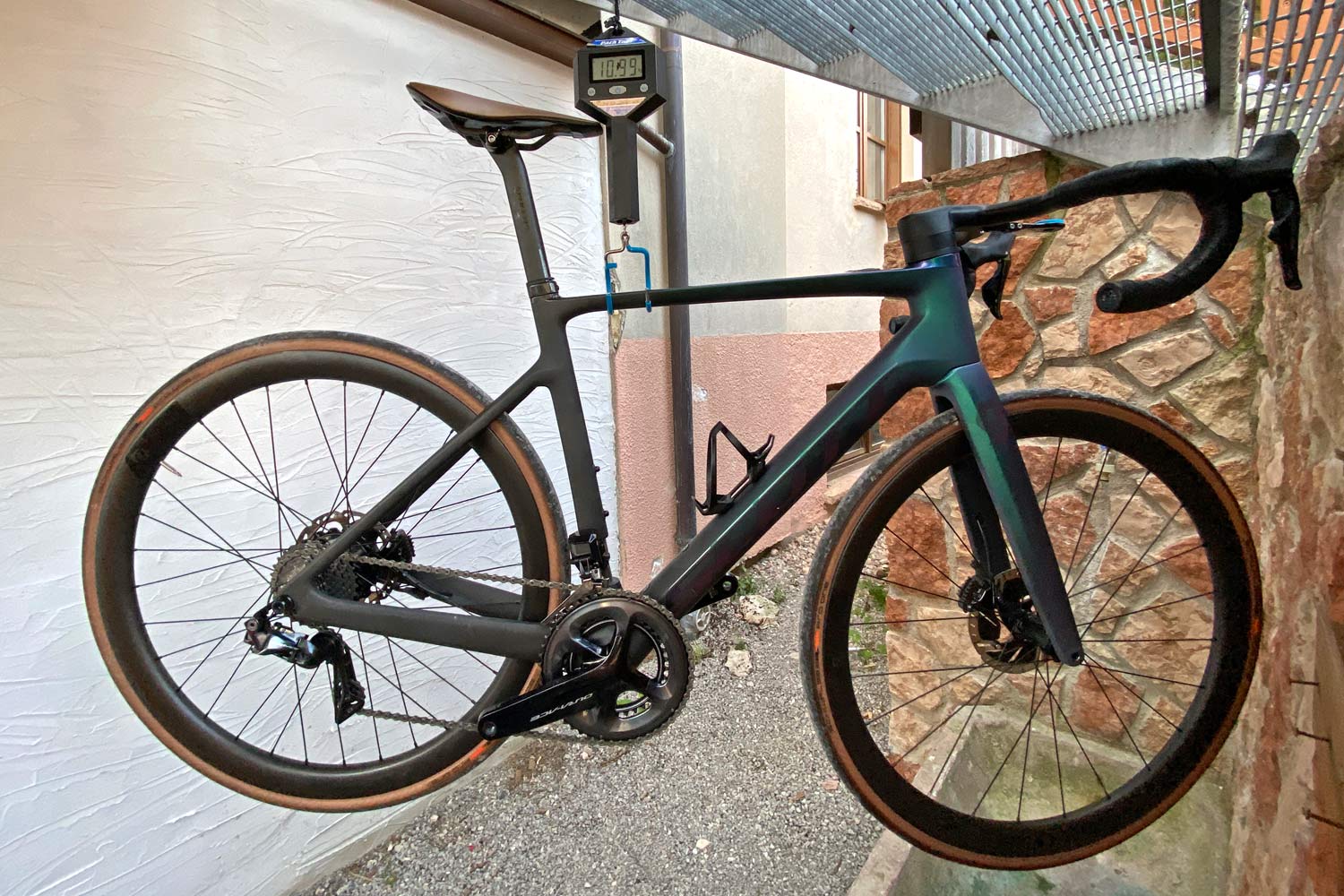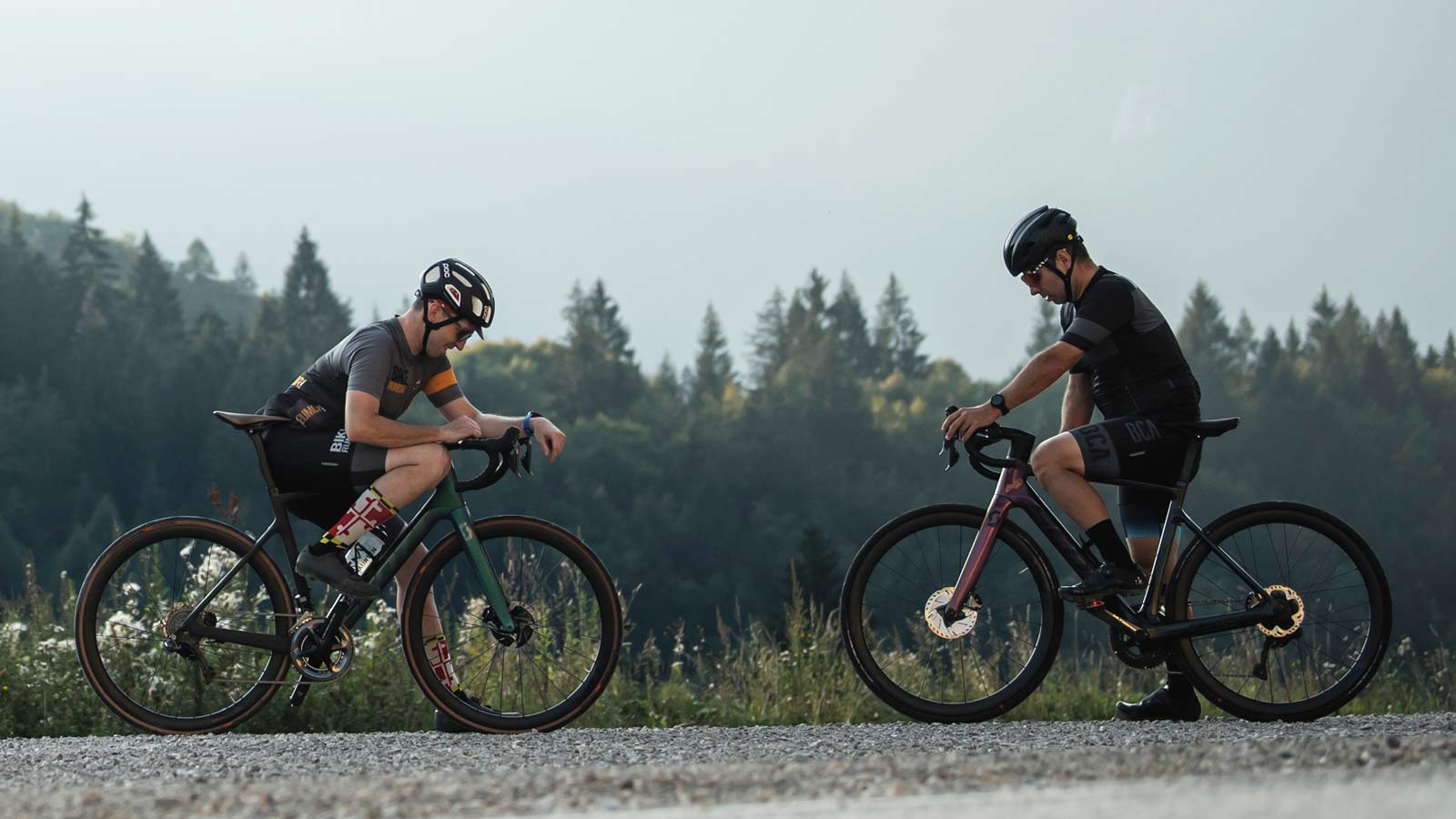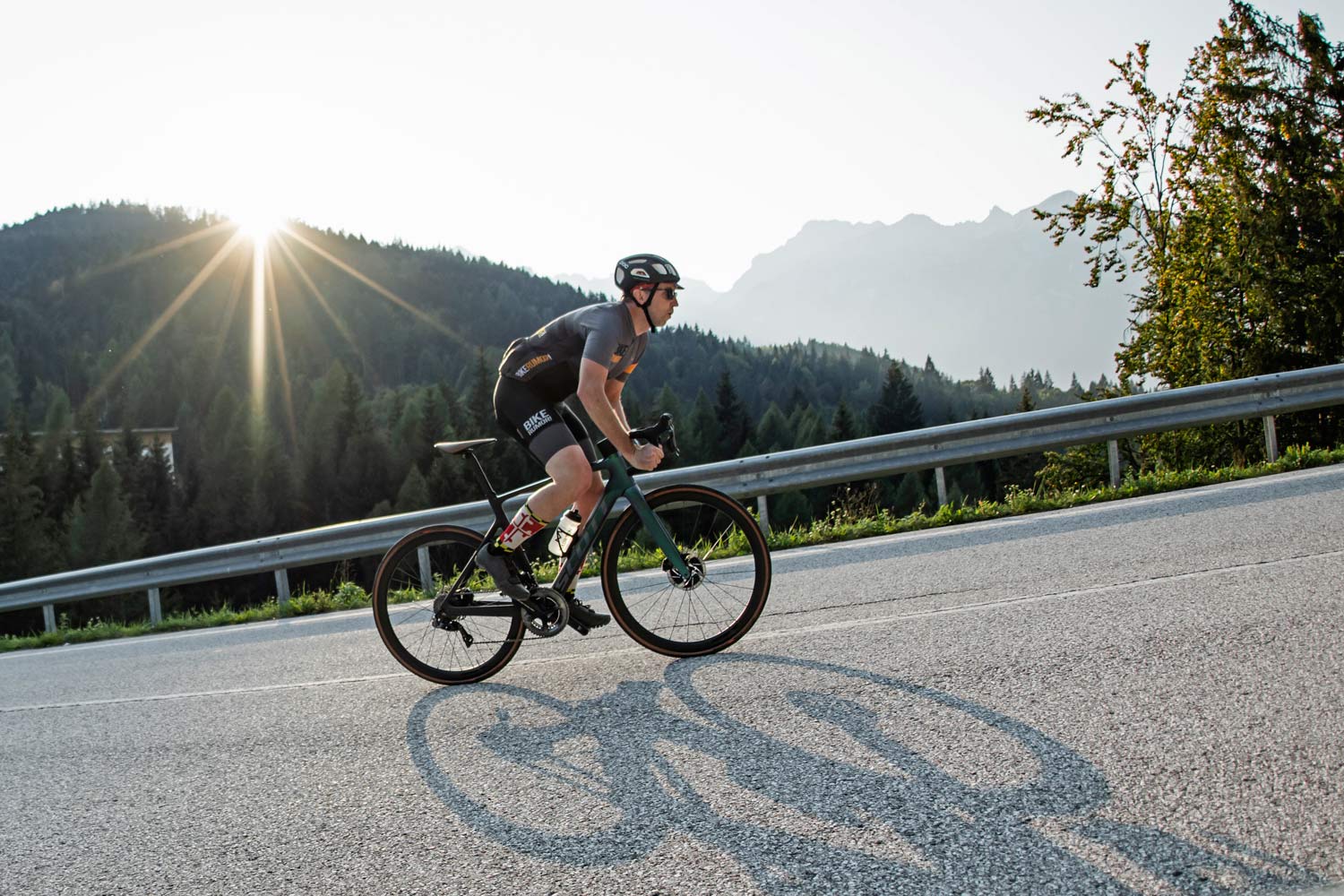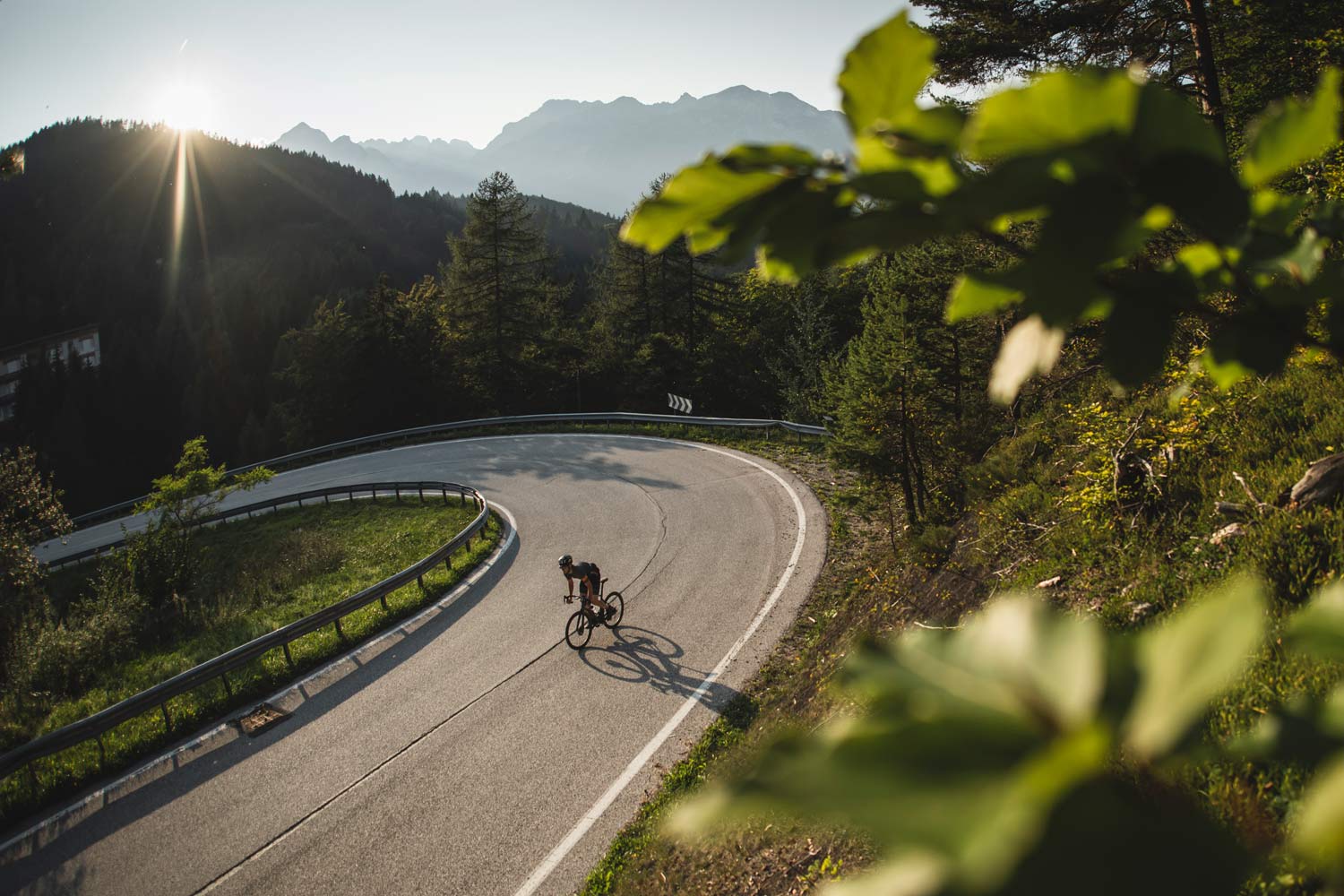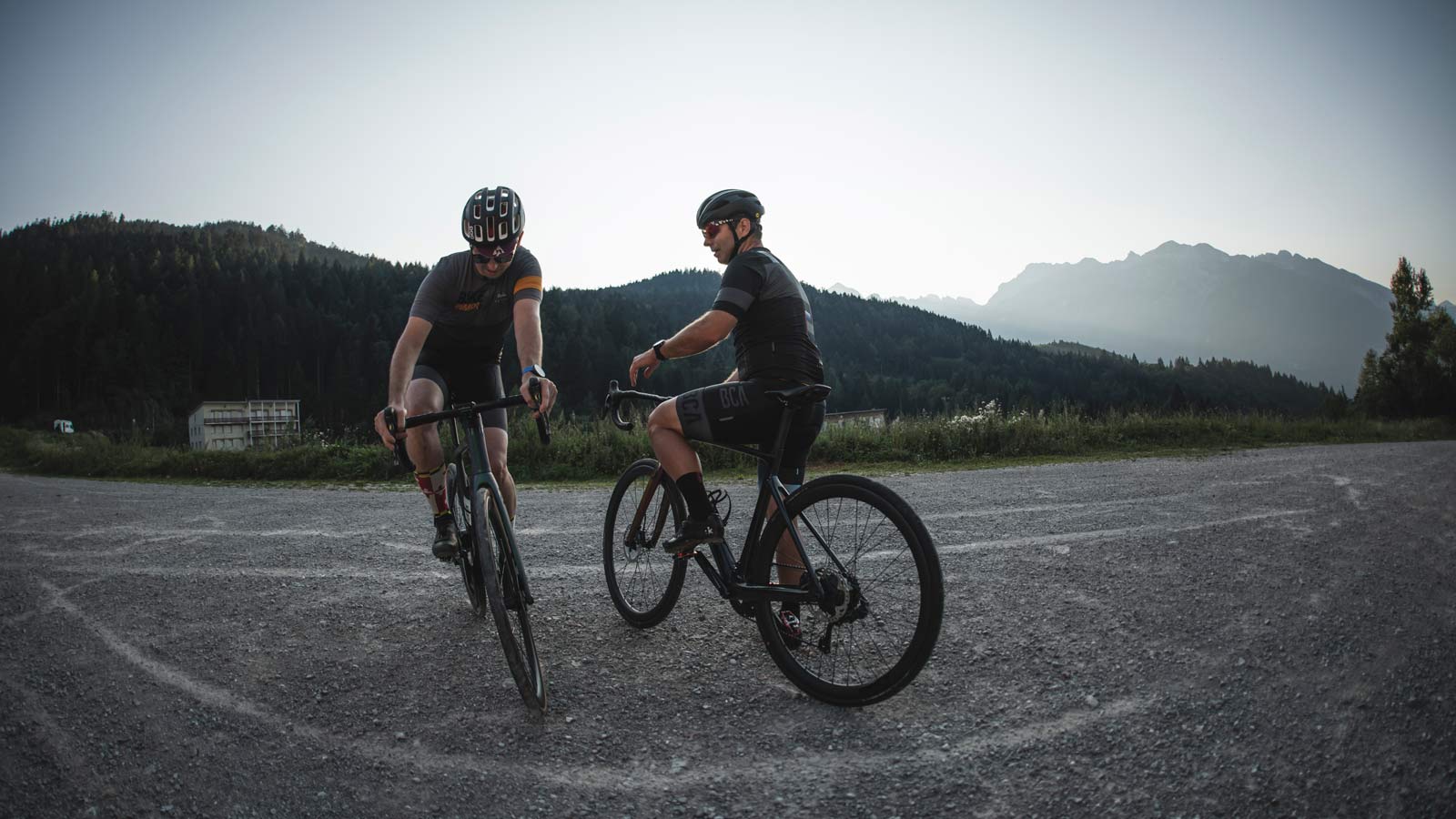Scott’s newest Addict RC eRide road e-bikes take a low-key approach to pedal assist, integrating a lower torque hub motor & a smaller battery into a light carbon frame that you could be excused for not realizing it is an e-bike. While some might look at the Addict RC eRide as trying to ‘hide’ its e-bike-ness, Scott says it is more about making you forget about the motor, and just letting you enjoy a slightly easier ride.
2021 Scott Addict RC eRide lightweight, stealth road e-bike
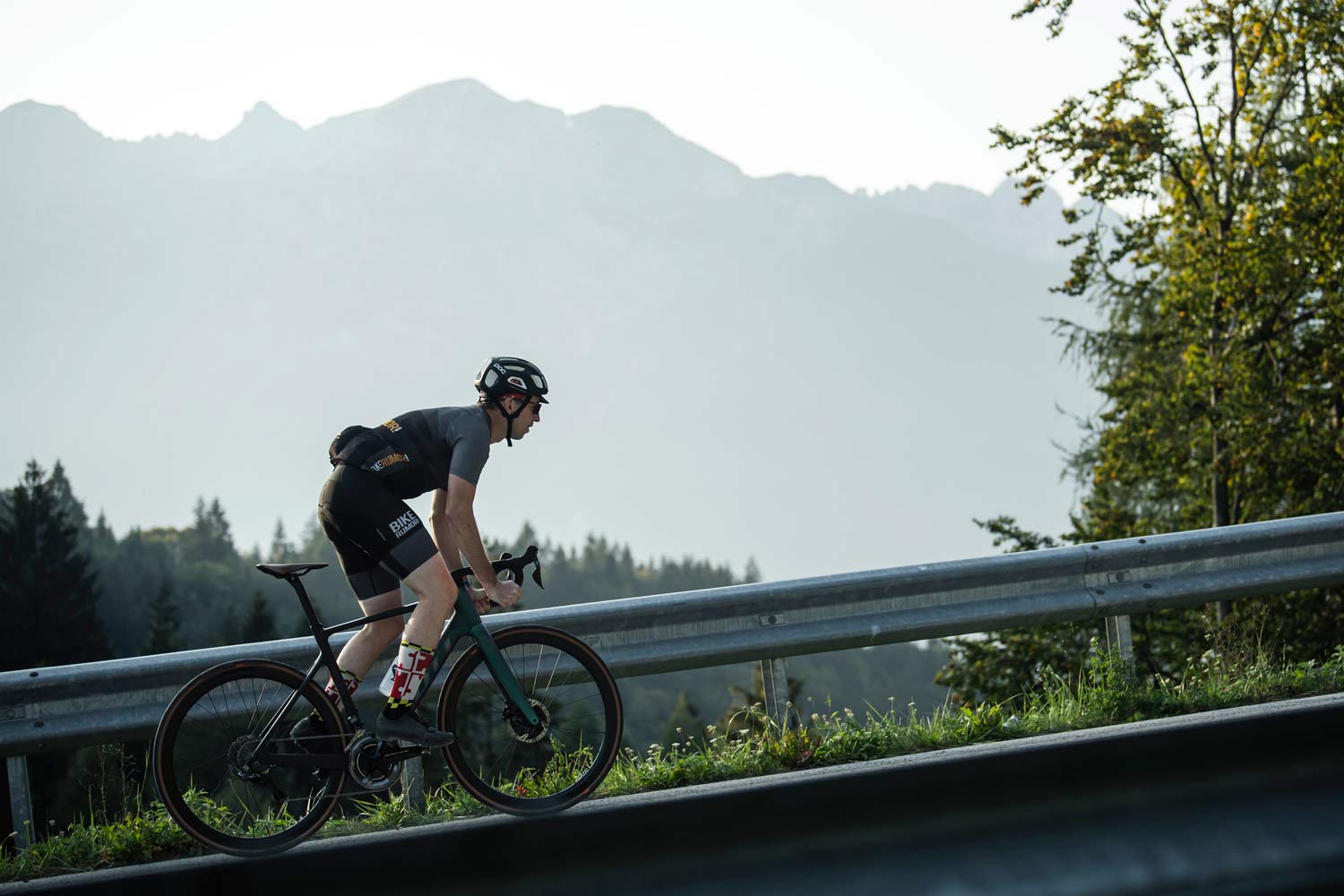
The idea of electrifying the Addict RC was about extending a rider’s potential range, flattening out those steep mountain climbs. So that’s what we did to test the new e-bike – heading into the Italian Dolomites to get up some steep grades.
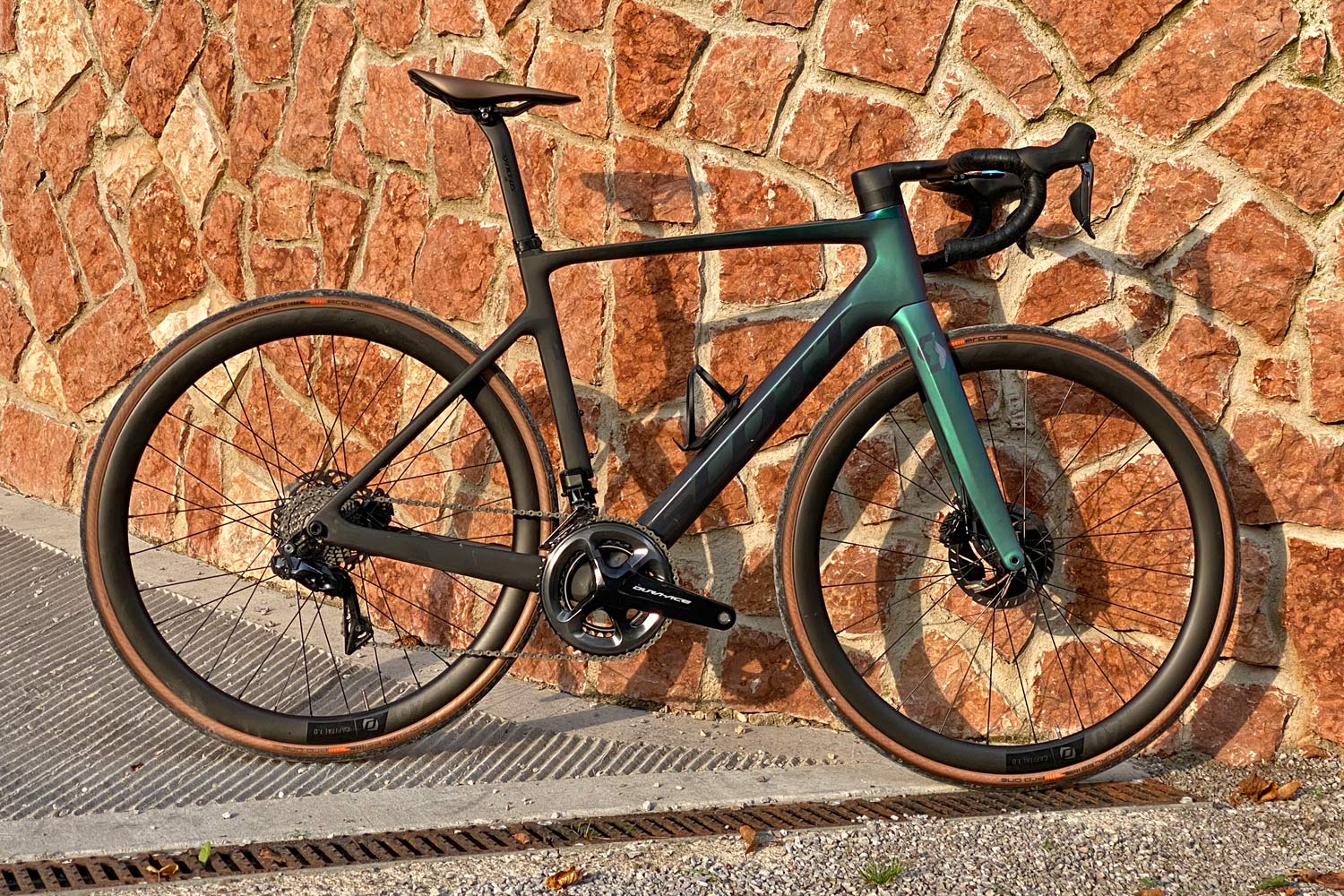 The e-bike itself is a lightweight HMX carbon construction that doesn’t differ much from the conventional Addict RC that you have to pedal all by yourself. And from the side, they are almost indistinguishable.
The e-bike itself is a lightweight HMX carbon construction that doesn’t differ much from the conventional Addict RC that you have to pedal all by yourself. And from the side, they are almost indistinguishable.
The battery that powers the whole thing is a bit smaller than you would see on most e-bikes – limited to just 250Wh, so that it slips inside an otherwise normal-looking downtube. Scott claims 120km of range and the ability to climb 2200m (when combining the 250Wh internal & 208Wh external batteries).
What really set it apart is the large X35 rear hub that houses the 250W motor inside. Using the standard ebikemotion X35 hub, you get pedal assist up to 25km/hr at a few different power levels – with max torque of 40Nm. That is essentially just limited to climbing, since it’s easy to push past that assist even on the flats. But the light weight and low-drag of the hub make it fairly painless when you cross that threshold, and certainly the overall light weight of the complete bike helps a lot!
The Scott Addict RC eRide is definitely a stealth setup, and there is just a single color coded button on the top tube to turn on and cycle through the few assist modes, and give hints about how much power is remaining. But a quick ANT+ sync to my Wahoo Roam, and I could see exact battery power & mode on a display I am already happy with.
The new Addict RC eRide isn’t the first bike we’ve seen with the low-key Mahle ebikemotion X35 hub motor, but it does come out to being one of the most sleek setups on the market. Only from the non-driveside will you really even notice it is there, with the extra wiring & oversized hubshell visible.
Fast e-road Geometry
The Addict RC eRide is said to have quick handling geometry – inspired by the standard Addict RC. With the motor built into the rear wheel, and the battery in a pretty standard downtube, there isn’t really much need for compromise on handling.
The new e-bike does take advantage of recent large volume road tire trends. So all builds are spec’d with 30mm tires for added comfort & grip, and there is plenty of room for at least a few mm wider tires.
Addict RC eRide – Tech details
What stands out about this e-bike is its totally clean setup. Much like the recent crop of premium pedal-powered bikes, the Addict RC eRide goes for fully internal cable routing. Both one-piece and separate stem & bar combos from Syncros allow for a neat & tidy setup, with mechanical or electronic shift compatibility.
The single Mahle ebikemotion button control is also just about the only outward sign that you are sitting on top of an e-bike.
The Addict RC eRide also adds the option to extend your pedal assist range with an external 208Wh battery that fits into a special cage, almost doubling how far the e-bike will carry you. Leave it at home for shorter rides, swap it in to tackle mountain passes.
The e-bike also benefits from small tricks from sister brand Syncros, which tucks in little features like a flat-pack set of wrenches, built-into the normal bottle cage.
Overall, even with the extender battery installed, the Addict RC eRide is still a light setup, with low-profile looks that is likely to satisfy those who don’t appreciate the over-the-top look of most e-bikes.
2021 Scott Addict RC eRide – Actual Weight
So how light is it really?
Scott claims a weight of 10.75kg for the Addict RC eRide in the top-level premium spec, and a frame weight shared by all models of 1040g.
Our test bike came is pretty close to that at a real 10.99kg / 23.7lb for my size M/54cm test bike. That weight comes with a suitably premium build kit – thing Dura-Ace Di2, carbon wheels & cockpit – but outside of climbing with a dead battery, it means a quick handling feel you don’t often find on any e-bike.
Addict RC eRide – Options & availability
Four versions of the Addict RC eRide are offered. I rode the top-spec 9500€ Scott Addict RC eRide Premium with a full Shimano Dura-Ace Di2 groupset, Syncros Capital carbon wheels & Syncros Creston iC SL one-piece cockpit (and including the range extender setup.)
Two, much more affordable 6500€ Addict RC eRide 10 model steps down to Ultegra Di2, with one being the nice-looking Contessa Addict RC eRide 10 that gets somewhat women-specific contact points, a sparkling paint job and does not include the XL size option.
Lastly, a 4500€ Addict RC eRide 20 model drops down to Ultegra/105 mechanical to cut costs, while still going fully integrated with routing and the same e-bike powertrain.
The Addict eRides will be available at Scott dealers by the beginning of next month… October 2020.
First Ride Impressions: Pedaling the Dolomites on the Addict RC eRide
The ‘ride higher, longer, steeper’ ethos of the Scott Addict RC eRide road e-bike fit in with our busy schedule, letting me squeeze in an extra ride before sunset, where I would otherwise have called it after a long day riding. Rolling out on flat and gently rolling terrain, then some extended descending, I quickly moved past the 25kph speed limit, but had no noticeable sense of any real drag from the motor while pedaling or coasting…
Then, when the road turned up, I quickly realized that Eco mode was not really doing much for me, and double tapping the illuminated button into Trail mode offered a more comfortable level of assist for proper climbing. And when it got really steep, Turbo was the way to go, getting the max out of the small setup.
Overall, the level of noise of the motor’s whine is so much quieter than the high-powered e-bike motors, that I quickly ignored it. Not a huge surprise, the best support seems to be when you sit & spin, instead of standing to stomp at low cadence. And riding with just the internal battery – even though there is plenty of range if you keep track – in Turbo on the steepest mountain climbs, I could just watch each percentage of battery tick away on my GPS as I motored up the climbs. For sure, pairing with your device will always be the best way to make sure you use up as much of the battery as possible – without getting stuck out on the road, pedaling an 11kg road bike over a mountain, after the sun set.
Scott-sports.com
